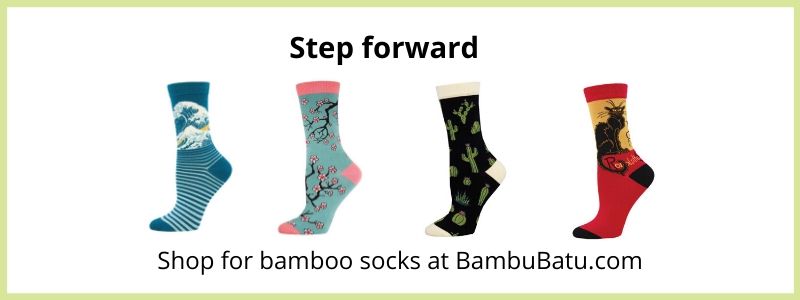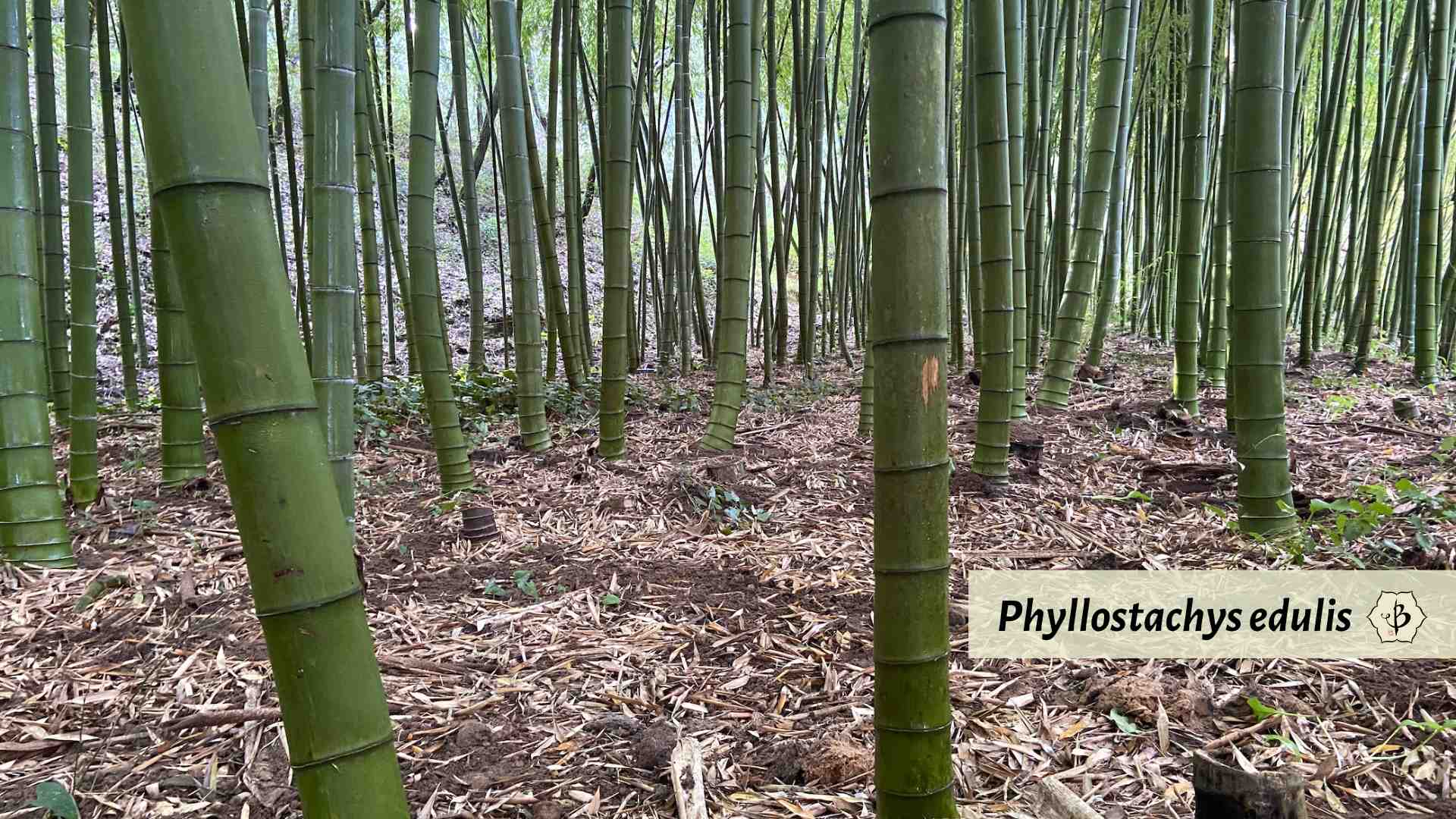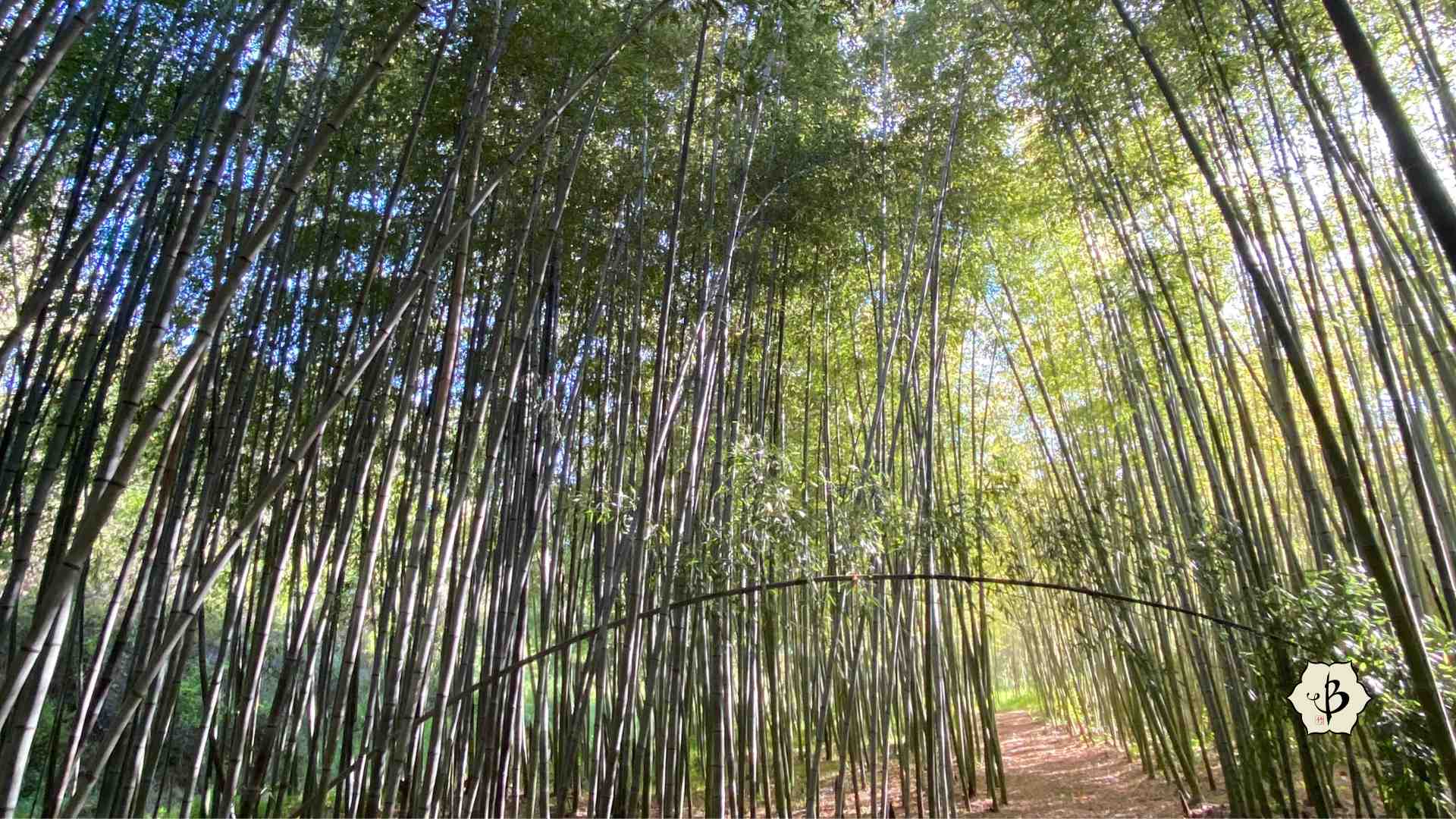The more I learn about bamboo, the more reasons I discover for loving it. It adds a sense of elegance and tranquility to the garden. It withstands the brunt of the elements and tolerates the neglect of an absentminded gardener. Bamboo also provides a marvelous substitute for plastics derived from petroleum and lumber taken through deforestation. And now we even have clothing made from bamboo textiles, an astonishing alternative to cotton.
Compared to cotton, bamboo clothing is remarkably soft, breathable, temperature-regulating regulating and anti-microbial. Not only that, but bamboo flourishes without the need for chemical pesticides and fertilizers. And you can harvest a mature bamboo grove continually without the need for replanting or the use of toxic defoliants.
The advantages of bamboo over cotton fabric go on and on, and it sometimes seems almost too good to be true. But for those of us who have slept on bamboo sheets, dried off on bamboo towels, or worn bamboo socks, shirts and underwear, the benefits are irrefutable. In the following article, we’ll review the many virtues of bamboo. And in the interest of complete honesty and transparency, we’ll also address the minimal disadvantages associated with bamboo.
NOTE: This article first appeared in October 2020, most recently updated in June 2024.

Why I like bamboo better than cotton
1. Softness
Above all else, bamboo fabric is just incredibly soft. The feel of bamboo against the skin is like nothing else. It’s certainly softer than cotton, and even comparable to silk. But it’s not sheer and slippery like silk. Instead, bamboo material has a buttery softness that you can’t get from anything else.
This characteristic makes bamboo ideal for so many applications, not the least of which are the t-shirts, socks and underwear. Enjoy it in those places where softness matters the most. You can also enjoy the sensation of bamboo from head to toe when you’re bundled up in a set of bamboo sheets.

2. Temperature regulating
The joy of sleeping on bamboo sheets goes way beyond the softness. Yes, the delicious texture of bamboo bedding can be downright intoxicating, but it’s the breathability and temperature-regulating properties of bamboo that deliver such an amazing night’s sleep. I’ve spoken to friends and clients who typically get cold at night as well as those who sleep hot, and they all agree that bamboo keeps them feeling better throughout the night.
It’s one of those things that sounds too good to be true, but the bamboo sheets really do keep you cool in the summer and warm in the winter. The benefits are real, and our customers agree that they’re good enough to justify the price, which may be one of the few downsides to bamboo. Still, customers consistently tell us that it’s an excellent value at $160 for a Queen set or $190 for a Cal King, compared to both the less expensive bamboo sheets on the market and the far costlier ones.
You can also enjoy bamboo’s breathability and temperature regulation in the shirts and socks. For example, I was never able to sleep at night with my socks on. It just feels too restrictive or something. But with bamboo socks, I’m perfectly fine. I’ve also noticed, when I wear a black bamboo shirt on a hot, sunny day, it doesn’t feel as hot as it would in a black cotton shirt. I’m not sure if this is because of bamboo’s breathability, or perhaps some property of UV protection, but I’ve noticed it again and again.

3. Absorbency
In addition to the softness and temperature regulation, bamboo’s absorbency makes it even more comfortable and amazing. This is most evident in the bamboo socks, which are moisture wicking, and the bamboo towels, which are just heavenly. Especially, when blended with Turkish cotton like ours are, the bamboo towels are fabulously soft and absorbent.
To be clear, this can also be a disadvantage in some situations. It’s true that the bamboo clothing does take a bit longer to dry due to its tremendous absorbency. But we usually hang our clothes, sheets and towels to dry on a rack, and on sunny day with a little breeze, they all dry within a couple hours. If you’re traveling however, and trying to hand wash some clothes in the bathtub and hang them up in a hotel room without a lot of airflow, they might not dry overnight. The thick bamboo socks and the heavy towels generally take the longest.
4. Antimicrobial and hypoallergenic
Something else that’s hard to believe about the bamboo fabric, and the socks in particular, is the antimicrobial property which makes them odor-resistant. This is something everyone seems to appreciate. If you’re ever camping or traveling and forget to pack enough pairs of socks, you can hope the ones you have are bamboo, because you can actually wear them two days in a row without great discomfort.
We’ve also had a lot of customers with allergies and skin conditions who explain that bamboo is one of the few materials they can wear without suffering some kind of reaction.

5. Fast growing
Now, apart from all the comfort benefits of bamboo, there is the plant’s incomparable sustainability. For one thing, bamboo is the fastest-growing plant on earth. Unlike trees that take decades to mature, or cotton that grows annually to become a modest bush, bamboo shoots can grow several meters high in a single growing season. In some varieties of bamboo, the root systems can also spread incredibly fast, growing outward and upward. Anything that grows that fast just makes sense to use.
6. Natural resilience
More important than its growth rate, in my opinion, is bamboo’s natural resilience and resistance to pests. Because of this, bamboo needs no pesticides or fertilizers to grow. This is in sharp contrast to cotton, which accounts for about 16% of the world’s insecticides and 11% of the world’s fertilizers, while covering only 2.4% of the world’s cultivated land. (Source: Pesticide Action Network.)
If you’re concerned about chemical toxics being sprayed in the air, saturating the fields, and draining into streams and groundwater, then you’ll agree that bamboo is a far superior choice over cotton. For those who work in or live near the fields, this makes a huge difference to their health and overall quality of life.

7. Oxygen producing
One of bamboo’s greatest boons for the environment is how it’s able to produce 30-35% more oxygen than trees. Carbon dioxide levels in the atmosphere are a leading cause of climate change, so generating more fresh oxygen is one of the best remedies.
8. Carbon sequestration
Along with producing more oxygen, living bamboo also forms a valuable carbon sink. Through the process of photosynthesis, bamboo (like all plants) converts carbon dioxide into oxygen. As it does this, the carbon is stored in the biomass of the bamboo, largely in the dense and complex rhizome roots. A unique property of bamboo is that you can harvest the poles without killing the plants, which survive in the tenacious rhizome networks. In other words, you can harvest the bamboo without releasing the carbon it had been storing.
9. Versatility
Cotton is soft and plentiful and easy to turn into fabric, but bamboo can be made into virtually anything. The clothing is amazing, but bamboo farmers have a little more security knowing that as demand fluctuates for bamboo clothing, bamboo flooring and other bamboo building materials, they can turn to different markets with their raw material. And for me personally, it just feels good to wear and make use of a plant with such vast and diverse potential.

10. Perpetual harvest
I think this is really the key to bamboo’s superior sustainability. Yes it grows super fast, and it doesn’t require chemical pesticides, herbicides and fertilizers, but the real strength is in the roots. As a rhizomatous grass, you can cut down bamboo and it will grow right back. Like the lawn in your front yard, you mow it and it just comes back stronger and thicker.
Once the bamboo reaches maturity, which usually takes five or six years, you can start to harvest its massive culms. At this point, there’s no need to plow the field or sew the seeds. The rhizomes just keep putting up new shoots, and by the end of the growing season, there’s a new crop of bamboo. And because the organism itself keeps on living and growing, like we mentioned before, its carbon sink is not being released with every harvest.
11. No defoliants
Finally, one of the worst aspects of cotton is the use of harmful defoliants. Because it can be so tedious to harvest the fuzzy cotton from the thorny bushes, conventional farmers spray the fields with toxic herbicides in order to decimate the plants at harvest time. It’s important to lay the plant quickly to waste, so as to harvest its soft flowers in a timely and efficient fashion. So these defoliants are extremely potent and toxic. Agent Orange is an example of a defoliant, one used as a chemical weapon in the Vietnam War with horrific consequences.
Some critics of bamboo will point out the processing stage, which requires the use of caustic soda (or lye) as a solvent. Typically, the processing happens in a closed-loop system that recaptures about 98% of the solvents. But it is a chemical process to be aware of when you wear bamboo clothing. Still, compared to the toxic herbicides, insecticides and defoliants sprayed over cotton fields, I’m convinced that bamboo remains a far greener and safer alternative.
Further reading
If you found this article useful and interesting, please consider sharing the link and subscribing to our blog. You might also enjoy some of these other popular blog posts.

























